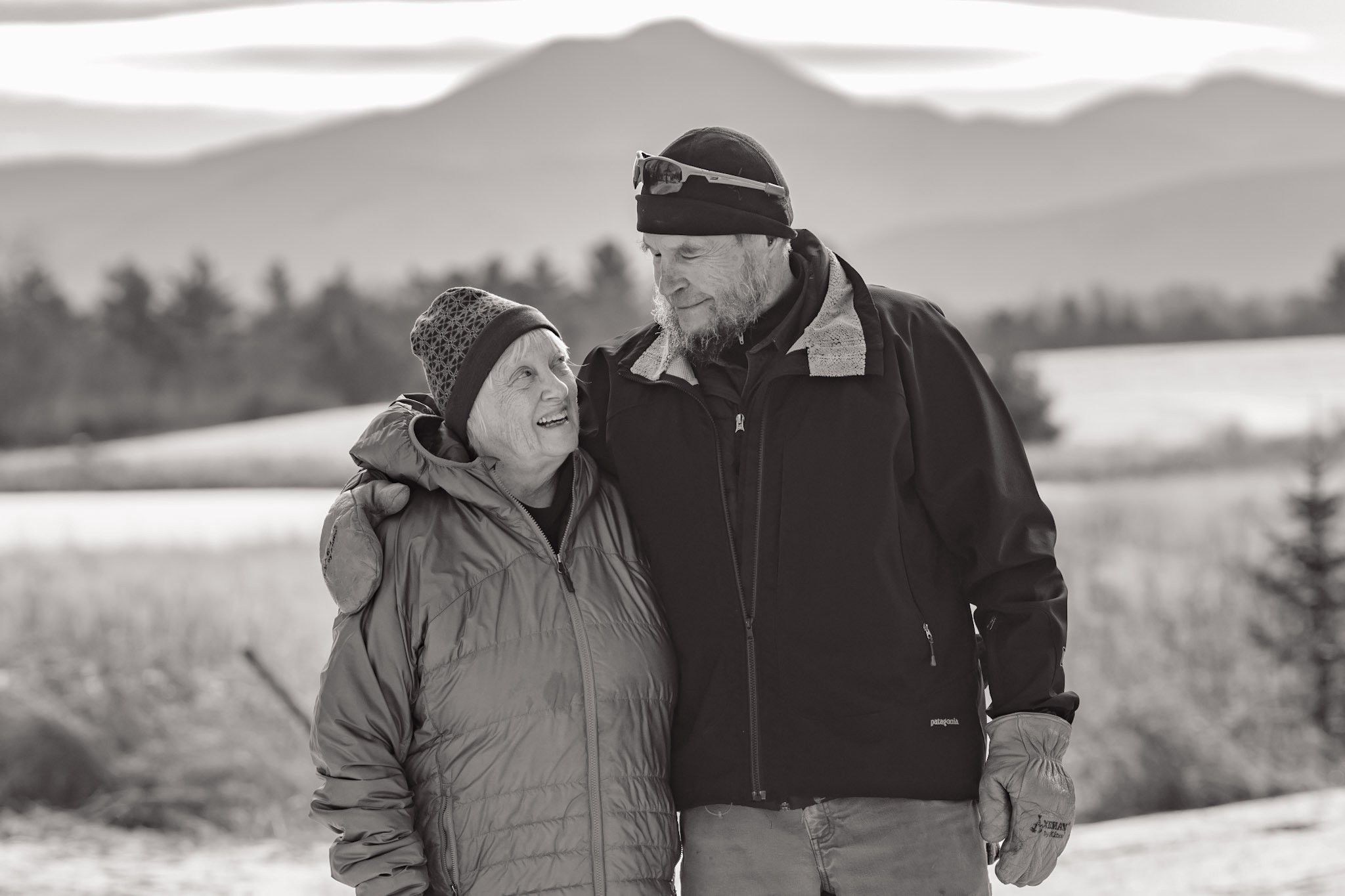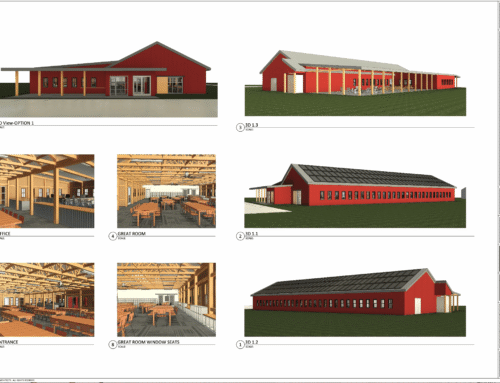Lucy and Jim McCullough
A History Written on the Land
The story of Catamount stretches back to 1873, when the McCullough family first acquired the land that would one day become the Catamount Outdoor Family Center and Community Forest. Over the next 150 years, this property transformed from a thriving agricultural estate into a hub for outdoor adventure and environmental stewardship, linking the past to the present, 1873 to 2025.

Big sky sunrise grooming below Goose Hill, on the south side of the network.
The expansive 393 acre conserved property (376 acres by the McCulloughs and 17 acres by Steve and Debbie Page) spans over a diverse wood lot, rolling pastures, and vistas overlooking the Winooski River, Champlain Valley, and the Green and Adirondack Mountain ranges. Under Lucy and Jim McCullough’s tenure, it has been a wellspring of creative agriculture, forestry, recreation, conservation, and community for nearly 50 years, fueled by a family history of dedicated stewardship, public service and entrepreneurial spirit.
When Lucy and Jim, founders of their family business the Catamount Family Center, were asked to share their history, Jim jokingly began with the mile of ice that covered the land during the glacial period. Although it sparked a laugh, it revealed their “bedrock to bird” or “natural communities” outlook on land management. Lucy shared that “we don’t really own land, no one owns land. The land is a constant – it’s always been here, it’ll always be here… so we are just the stewards.”
The house and surrounding property was originally home to Giles Chittenden, the son of Vermont’s first Governor, Thomas Chittenden. The home was built for Giles and his family in 1796, making it the oldest building on record in the Town of Williston and one of the oldest buildings in Vermont.
In 1873, Smith Wright purchased 90 acres, including the house, which eventually grew to about 500 acres over time. It served as his home and farm, and he also used portions of the property for his cold storage business, one of the first of its kind in the country.
Richard Allen at the Williston Observer found a powerful quote from the 1945 Suburban List claiming the estate was “only equaled by the manors at Mount Vernon and Monticello”. The property sat next to the railroad, allowing Wright to ship poultry, eggs, and butter all the way to Boston and New York (Allen, 2025).
The business and the farm stayed in the family after Wright’s passing and was eventually passed down to Julia Wright. In 1942 Julia married James D. McCullough and together they owned 520 acres with more than half being actively cultivated (Allen, 2025).
Julia recognized that private ownership was a European concept inflicted on this region after the Abenaki and other Indigenous peoples lived in harmony with these Northeastern lands for thousands of years. When she left the land and the Chittenden home to her son, she included that his wife, Lucy McCullough, would have equal ownership, passing on a meaningful stewardship ethic.

This powerful decision helped solidify the McCulloughs’ commitment to the land and to each other.
Look for our next blog to learn how Lucy and Jim started their family business to ensure that the land remained healthy and accessible to the community.
Stay tuned for our next post “The Founding of the Catamount Family Center”
Source:
Allen, R. H. (2025, May). Hindsight: The Giles Chittenden house – a gift and burden. Williston Observer.https://www.willistonobserver.com/community/past_times/hindsight-the-giles-chittenden-house-a-gift-and-burden/article_9256912a-62ca-45be-b90c-d74353885ecb.html
Written by Ella Yates
Edits by Catamount staff & Lucy and Jim McCullough




